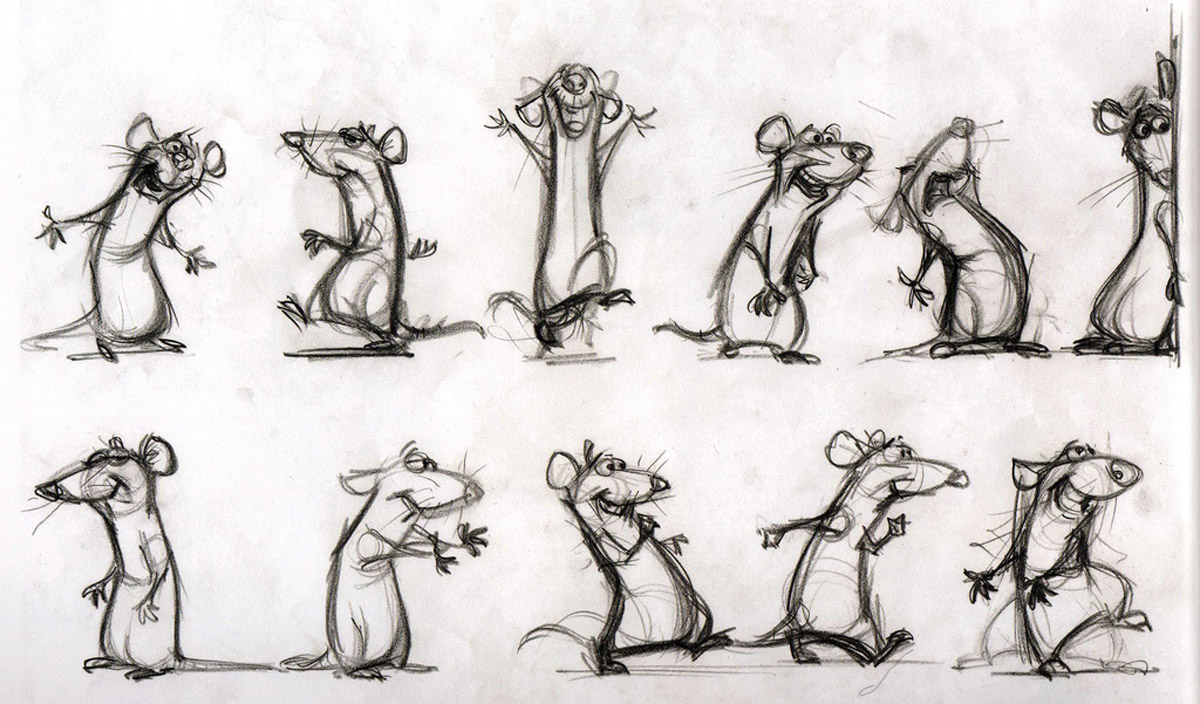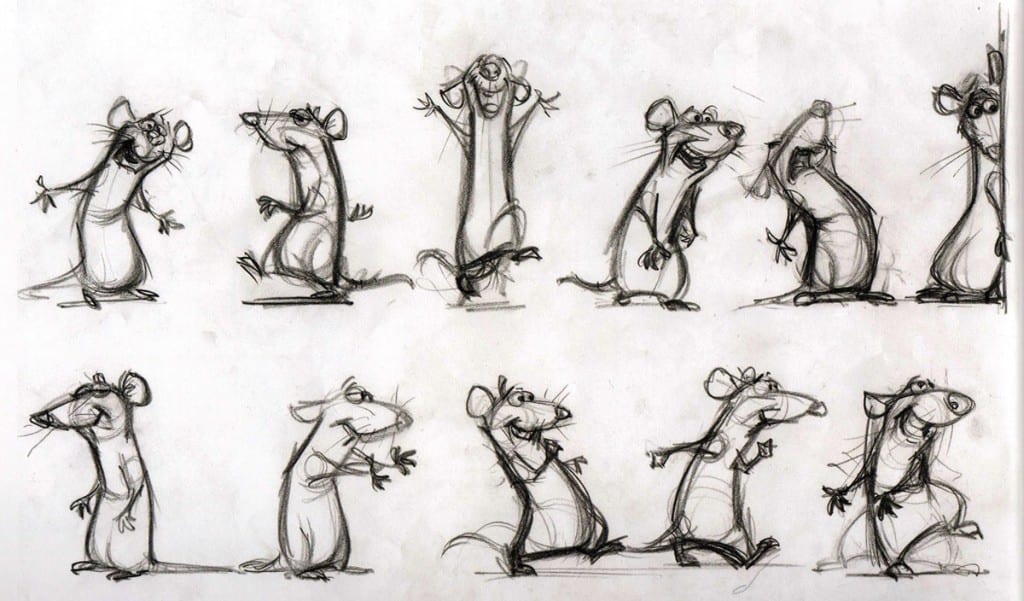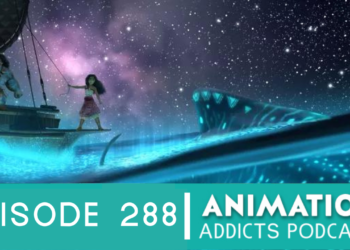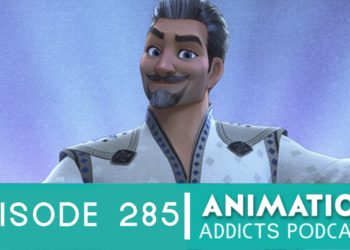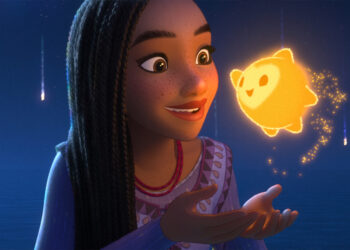A Note from the Author
By my personal admission, the topic of hand-drawn animation and its current state in the animation industry is a subject that I always keep coming back to. Just when you think that you’ve squeezed the subject for all of its worth, something comes along that unveils a new layer to the conversation and injects it with new vibrancy and life. Alas, it was this ‘something’ that prompted me to go back and ask a hard question. It’s one that will definitely cause a divide among readers on both sides of the equation.
I never, ever go into these type of articles with the intention of asking questions that are easy to answer in one go. But, if I’m being honest, I had to think really hard about this article. How could I write this in a way that is satisfying? How could I give an explanation that is worthy of my time devoted to this article and of providing an answer to the question at hand? Now, in hindsight, I’m glad I wrote this. You might not be happy with it (not that I expect you to be), but I’m happy with it simply for the fact that it might challenge you in the same way that it challenged me.
With all that out the way, let’s go to the question. Here we go.
The Question at Hand (Introduction)
Did Pixar kill hand-drawn animation in the U.S.?
Currently, Pixar is enjoying an ascendant comeback. Thanks to a little film called Inside Out, Pixar is once again in the good graces of critics and audiences everywhere and, judging by the recently released trailer for The Good Dinosaur, its comeback phase looks to continue unabated. But I guess on some level, this was to be expected. There was no way that Pixar, the studio that forever shifted the course of the animation industry, would not recover from a three-film tumble that started with Cars 2.
Now, you might be asking yourself, “What do you mean when the animation industry was ‘forever shifted’ by the course of one company?”.
A Trip Through Times Past
Let’s rewind the clocks to November 22 of 1995, when the first Toy Story bowed in theaters. During this time hand-drawn animation was still prevalent in US theaters everywhere and was arguably still in its ultimate prime, while CG animation was still in its infancy and not yet the industry standard (as is the case today). Back then, the idea of a fully CG-animated feature film (let alone it becoming industry standard) was almost unheard of.
Of course, that would all change when Toy Story hit the scene. Oh boy, did Toy Story turn heads. Not only did it mark the beginning of an iconic franchise (now set to receive a fourth installment), but it was also a watershed moment for the animation industry. CG-animation was the way of the future, and what better way to prove it than the success story that was Toy Story.
Throughout the remainder of the 90’s and into the early 2000’s hand-drawn animation was still in vogue, even as a number of flops started to pop up occasionally (Quest for Camelot, The Iron Giant, Titan A.E., etc.). Running concurrent to this trend was a rise in the number of animation studios that either switched over to CG-animation or did CG-animation from the onset. Regardless, Disney held firm on hand-drawn animation, made confidant by their successes with films like Pocahontas, The Hunchback of Notre Dame, Mulan, and Tarzan as they eventually started to command a near automatic monopoly over these films.
But as history would have it, even Disney’s iron grasp on hand-drawn animation would begin to slowly fade away as the early 2000’s saw more of its hand-drawn feature films come up short in the box office: Atlantis: The Lost Empire, Treasure Planet, Brother Bear, and Home on the Range. As the medium of hand-drawn animation began to fall out of favor with each passing year, so did Disney’s interest in soldiering on with a medium that was starting to hand them diminishing returns. The feature animation unit of Disney-MGM Studios (now known as Disney’s Hollywood Studios) in Orlando was shut down in March of 2004. Home of the Range was also released the same year and, as with the others, it underperformed at the box office.
Now, let’s time-jump five years to 2009. CG-animation is now the industry standard and rule of the land, and Disney realized this fact after Home on the Range and shifted course accordingly. That said, there was a certain sector of the company that thought hand-drawn animation still deserved a fair shot. So along came Princess and the Frog, Disney’s first 2D-animated film in some time. While not a box-office flop or even an underperformer, any hopes that the movie would be a course-correction for theatrically released hand-drawn animated films were squandered by missteps in marketing and an error of judgment that saw Princess and the Frog stomped on by the release of Avatar five days later.
Two years afterward, 2011 would see Disney take a final dip in the waters of hand-drawn animation with Winnie the Pooh. Despite shining reviews and a modest, easily achievable budget, it too was trampled on by the release of another big film (Harry Potter and the Deathly Hallows – Part 2) and likewise went utterly flaccid at the box office with $44 million.
This was (arguably) the last breath drawn by Disney’s hand-drawn division, two years before it was dismantled entirely in the summer of 2013. Jumping forth to the here and now, hand-drawn animated feature films on the big screens of US theaters are a rare occurrence. Even more rare are hand-drawn animated feature films made and produced in the US. It’s been four years since the release of the last hand-drawn animated feature film to ever come from a major studio, and the argument over the current state of hand-drawn animation is still debated with hard passion and even harder opinions.
Flipping the Discussion on Its Head
Normally, when these arguments spring, the CG medium is often held up as an item of contempt and even outright hatred in some circles. From that particular genesis, we get any number of reasons for why 2D has fallen so far out of favor in the eyes of the animation industry. But what if we all have it wrong? It might be impossible to believe, much less think about, but what if all the blame is somehow misdirected? What if, instead of pointing fingers at more current figures, we direct all that blame, scorn, and hatred towards the one studio responsible for the one film that forever changed the animation industry for all time?
What if we were to hold Pixar responsible for what we now know as the slow motion demise of hand-drawn feature animation and its current state?
Would You Blame Them?
First off, we would have to face the undeniable truth behind it all: without Pixar and Toy Story, the medium of CG-animation wouldn’t be where it is today. This would probably be a good place to start if you feel game to place Pixar in the hot seat. Sure, hand-drawn feature animation didn’t exactly drop dead when the first Toy Story hit the scene, but it was definitely the spark that led to a gradual domino effect of other animation studios looking at the medium of CG-animation and saying, “We can do that!” or “We can do that, too!”
The “death” of hand-drawn feature animation didn’t happen overnight. Rather, it was gradual. It was one that took place in the span of nearly a decade and a half since Toy Story came out. Eventually, “We can do that!” turned into “We can only do this!” as hand-drawn animation started to disappear from our theater screens. Now, the days when hand-drawn animation was considered commercially viable are long gone as CG-animation and the technology behind it are what drive the industry forward these days.
Once again, this is because Pixar dared to do what was then considered the impossible and make an all-CG film. Nobody else did that. Nobody else made the film that would single-handedly shape the future of an entire industry. Nobody else did that but Pixar.
If you want somebody to blame for why hand-drawn animation isn’t even given so much as a glance from the big studios nowadays, you could blame Pixar. If you want somebody to blame for the ‘relegation’ of hand-drawn animation to TV, online, and international outlets, you could blame Pixar. If you want to be angry, mad, and outright livid and blame somebody for the dearth of hand-drawn animated films in US theaters nationwide, you could definitely blame Pixar.
Is Pixar responsible for the death of hand-drawn animation and its current state? If you were brazen enough in your support for the hand-drawn medium and bullish enough in your hopes for an industry-wide comeback, then you could say yes.
Would You Want to Change History?
Now, for a follow-up question. Given all that I’ve told you, would you want things to change? If you were given the opportunity to go back in time and change history so that, by some chance, today’s generation would still be able to see hand-drawn animation in US theaters, would you take it?
It’s certainly something one could think about. But let’s say that you did it. Let’s say that Toy Story didn’t happen. Then there’s a pretty good chance…that nothing beyond some amusing ripples to film history would occur.
Why do I say that? Why did I set all this up, only to pivot in the other direction? Because if time were truly immutable, then some other studio would have made that groundbreaking film that would gradually move the industry toward the CG medium. It may not have been like Toy Story in terms of plot or premise, but you’d be in for a shock if you didn’t think that any other studio would take Pixar’s place in the history of animation. Heck, who’s to say that Pixar could have been stopped from making Toy Story anyway?
The fact of the matter is that no matter what could have been done or what anybody wished they had done, there is definitely a sense that, once Pixar put CG on the map, the medium’s evolution and rise to prominence was (on some level) inevitable. That is something that we can’t change. Whether you feel like Pixar is responsible for the demise of hand-drawn animation or not, we can’t ignore the fact that CG-animation will always have a place in the industry because of Pixar.
A Glimpse Into the Future
I mentioned the word ‘evolution’ when talking about CG animation. If history also tells us anything, it’s that the medium of CG and the ways of doing it have evolved over the years. So, if it’s that easy for one medium, why can’t that be the same situation for another?
I have made mention in previous articles about the myriad possibilities that could come along with the ‘evolution’ of hand-drawn animation. So once again, I point you towards the projects that signify a very interesting future for the medium of hand-drawn. Projects like Klaus and Kariba are definitely strong indicators of where the hand-drawn medium might be headed, as technologies used in the production pipelines of these projects evolve. Yes, even the Meander system used by Disney to craft Paperman and Feast opens up new possibilities that we could have never thought about before.
Would all I just wrote about be possible if hand-drawn animation was still the industry standard today? I will leave you to think on that one, but I do think that there are some exciting things in store for hand-drawn animation. Will it lead to what many are hoping to be an industry-wide comeback of 2D animation? I will also leave you to think on that one, but it would be most ideal if it led to a future in which both CG and 2D held equal footing as industry standards.
What do you think? What are your opinions pertaining to the subject of this article? Let us know in the comments!
[polldaddy poll=8997173]
Edited by: Hannah Wilkes


